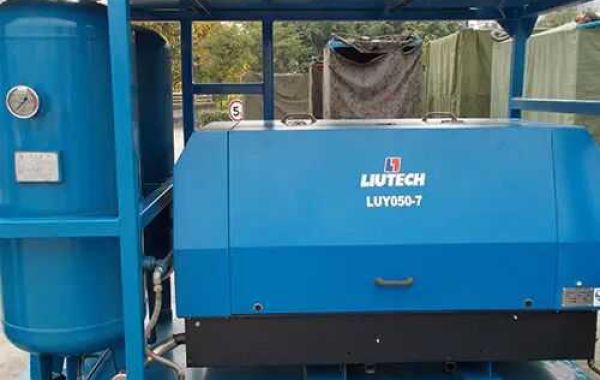What Is Hydraulic Pressure Testing?
A hydraulic pressure test, or hydrostatic test, measures the strength of a pressure system and checks for leaks. It is performed on components such as motors, pumps, valves, actuators, hoses, tubing, and fittings. A hydraulic system may be evaluated in different ways. Burst and proof pressure, continuous flow, cracking and reseat pressure, endurance, flow/pressure drop, and hydrostatic pressure are just a few of the variables that may be tested.
Hydro testing pumps are common procedure used to check fluid pressure vessel, such as, cylinders, boiler, tubes pipe, valves, castings, components etc.. Hydrostatic testing pumps is also a common testing procedure to verify pressure vessels do not leak or have manufacturing flaws. Hydro testing pumps unit is important for pressure vessels in the interest of device safety, and durability under operating pressure.
The pressure vessel to be tested is located within a sealed vessel. The sealed vessel is filled with a incompressible fluid, typically water or oil. The pressure test vessel is then subjected to a known internal pressure for a known duration. The known internal pressure is normally a significant percent greater than the maximum operating pressure of the device (typically 150%). The applied pressure causes the test vessel to expand, instrumentation, which is already in place, are then read to determine the total and permanent expansion that the test chamber (external) undergoes. A physical and visual inspection then follows the hydrostatic pressure test to determine that the device being tested has not been damaged or permanently distorted due to the test pressure.
Pressure vessels may be re-verified by subjecting the vessel device to a proof-pressure test. The proof-pressure test is commonly referred to as a "modified hydrostatic test". The pressure vessel is subjected to a known pressure for a predetermined time. During and following the proof-pressure test, the pressure vessel is inspected for abnormal distortion or failure.
PressureJet also offers hydro testing pumps with pre-filling cum pre-pressurizing cum pressure building system. For large volume of hydro test combine hydrostatic pressure testing unit is most preferred solution. This hydro testing pumps equipment is compact, efficient cost effective, available in different combinations of pressure and flow. The unique automatic hydro test controller is a standard feature of this system.Otherwise also for large quantity, automatic hydrotest controller is very useful to improve productivity thru even a kay man.
Though theoretically water is considered as non compressible fluid, it requires considerable amount of feeding to raise the pressure.
“How much water is to be injected to raise certain pressure?” and “What time will it take to reach up to desire pressure?” are typical questions, asked by majority customers who are inquiring about high pressure hydrotest pumps. It depends upon the following
Initial pressure from which we start feeding the water
Total Volume of the equipment
Required pressure for the testing
Time available in minutes/ hours.
What Do Pressure Ratings Mean?
Pressure is one of the most important considerations when choosing hydraulic components. The pressure rating of a device identifies its maximum working pressure. A fitting’s rated working pressure is determined by the lowest pressure rated fitting; the lowest rated working pressure of any component should be considered the maximum working pressure of a hydraulic system.
How does it work?
Hydrostatic testing is a type of pressure test that works by completely filling the component with water, removing the air contained within the unit, and pressurizing the system up to 1.5 times the design pressure limit the of the unit. The pressure is then held for a specific amount of time to visually inspect the system for leaks. Visual inspection can be enhanced by applying either tracer or fluorescent dyes to the liquid to determine where cracks and leaks are originating.
Common Methods
There are three common hydrostatic testing techniques that are used to test small pressure vessels and cylinders: the water jacket method, the direct expansion method, and the proof testing method.
Water Jacket Method
In order to conduct a this method, the the vessel is filled with water and loaded it into a sealed chamber (called the test jacket) which is also filled with water. The vessel is then pressurized inside the test jacket for a specified amount of time. This causes the vessel to expand within the test jacket, which results in water being forced out into a glass tube that measures the total expansion. Once the total expansion is recorded, the vessel is depressurized and shrinks to its approximate original size. As the vessel deflates, water flows back into the test jacket.
Sometimes, the vessel does not return to its original size. This second size value is called permanent expansion. The difference between the total expansion and permanent expansion determines whether or not the vessel is fit-for service. Typically the higher the percent expansion, the more likely the vessel will be decommissioned.
Direct Expansion Method
The direct expansion method involves filling a vessel or cylinder with a specified amount of water, pressurizing the system, and measuring the amount of water that is expelled once the pressure is released. The permanent expansion and the total expansion values are determined by recording the amount of water forced into the vessel, the test pressure, and amount of water expelled from the vessel.
Proof Pressure Method
The proof pressure test applies an internal pressure and determine if the vessel contains any leaks or other weakness such as wall thinning that may result in failure.1 In the United States, This method is only permitted when the U.S. Code of Federal Regulations does not require permanent and total expansion values to be recorded.
Alternative Methods
Some equipment may not be designed to handle the loads required for a pressure test. In these cases, alternative methods such as pneumatic testing should be employed. Pneumatic testing is another type of pressure test that involves pressurizing the vessel with a gas such as air or nitrogen instead of water. However, special caution should be used when performing pneumatic testing as gaseous mediums have the ability to be compressed and contained in larger amounts compared to hydrostatic testing.
Notes on Hydro Testing
For pipelines, hydro tests are conducted while the pipeline is out of service. All oil and/or natural gas is typically vented off, and the line is mechanically cleaned prior to testing.
In any case, operators and inspectors should consider the properties of the hydrotest fluid medium and how the medium may have an effect on the equipment. For example, water is a good environment for corrosion to take place. Therefore, equipment should be properly dried and contaminant free before starting operations.








